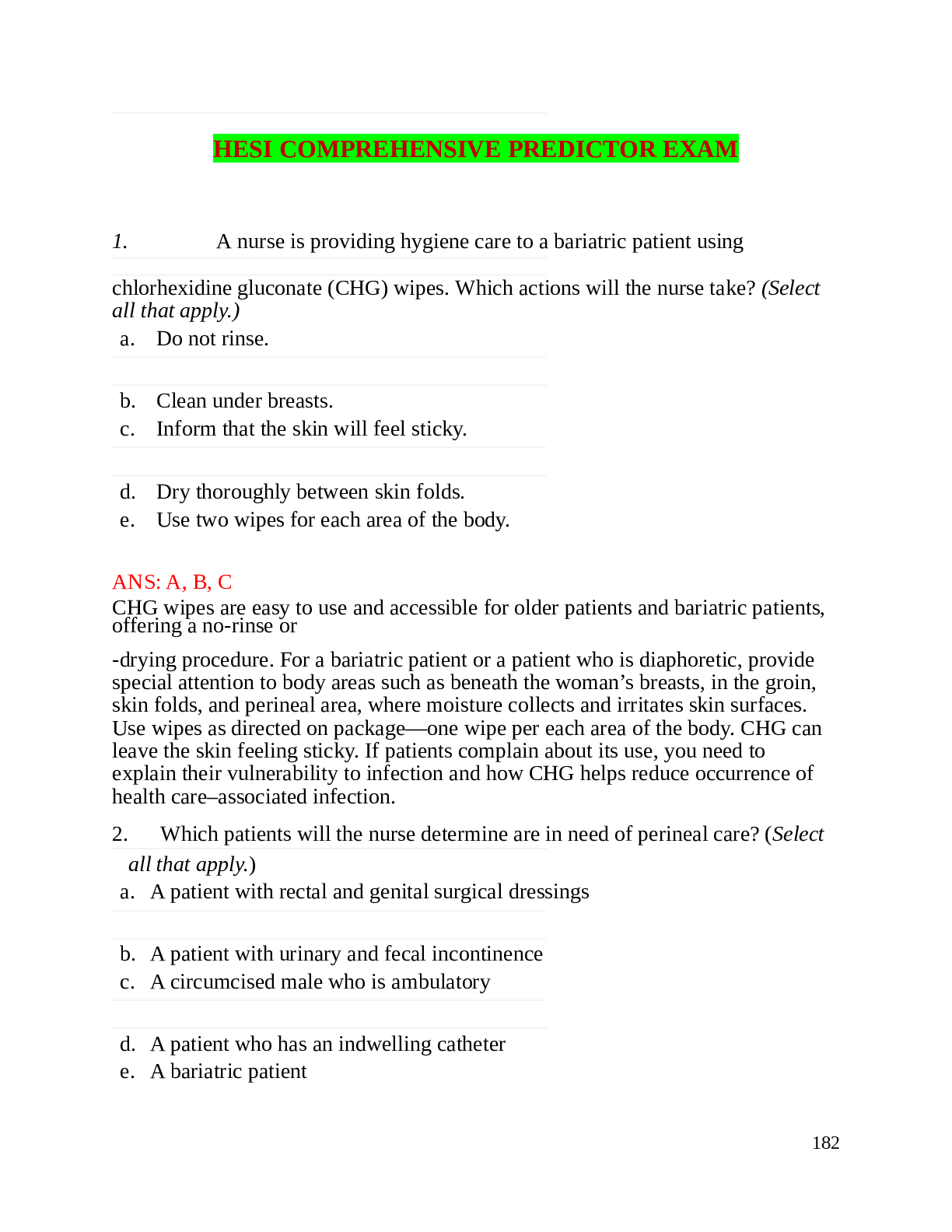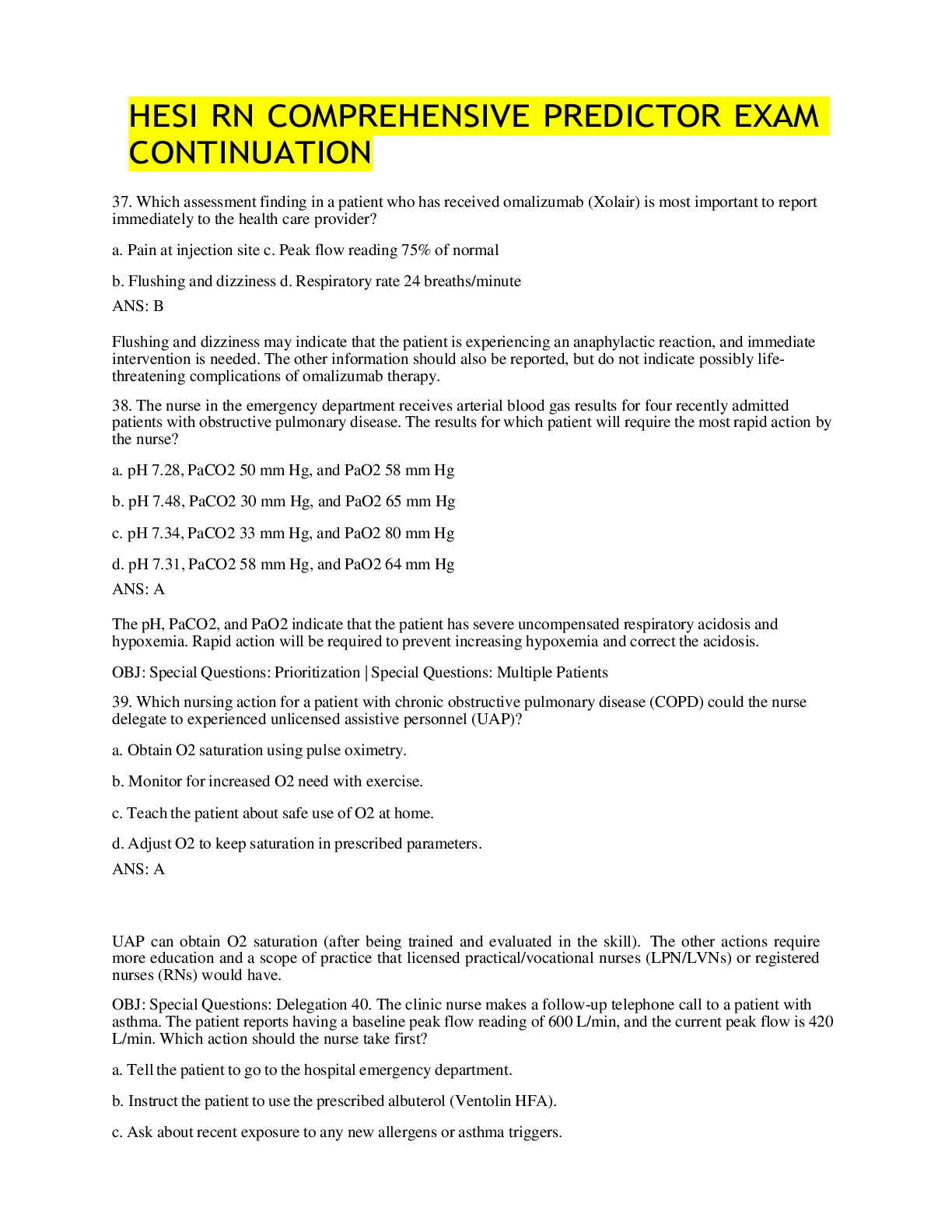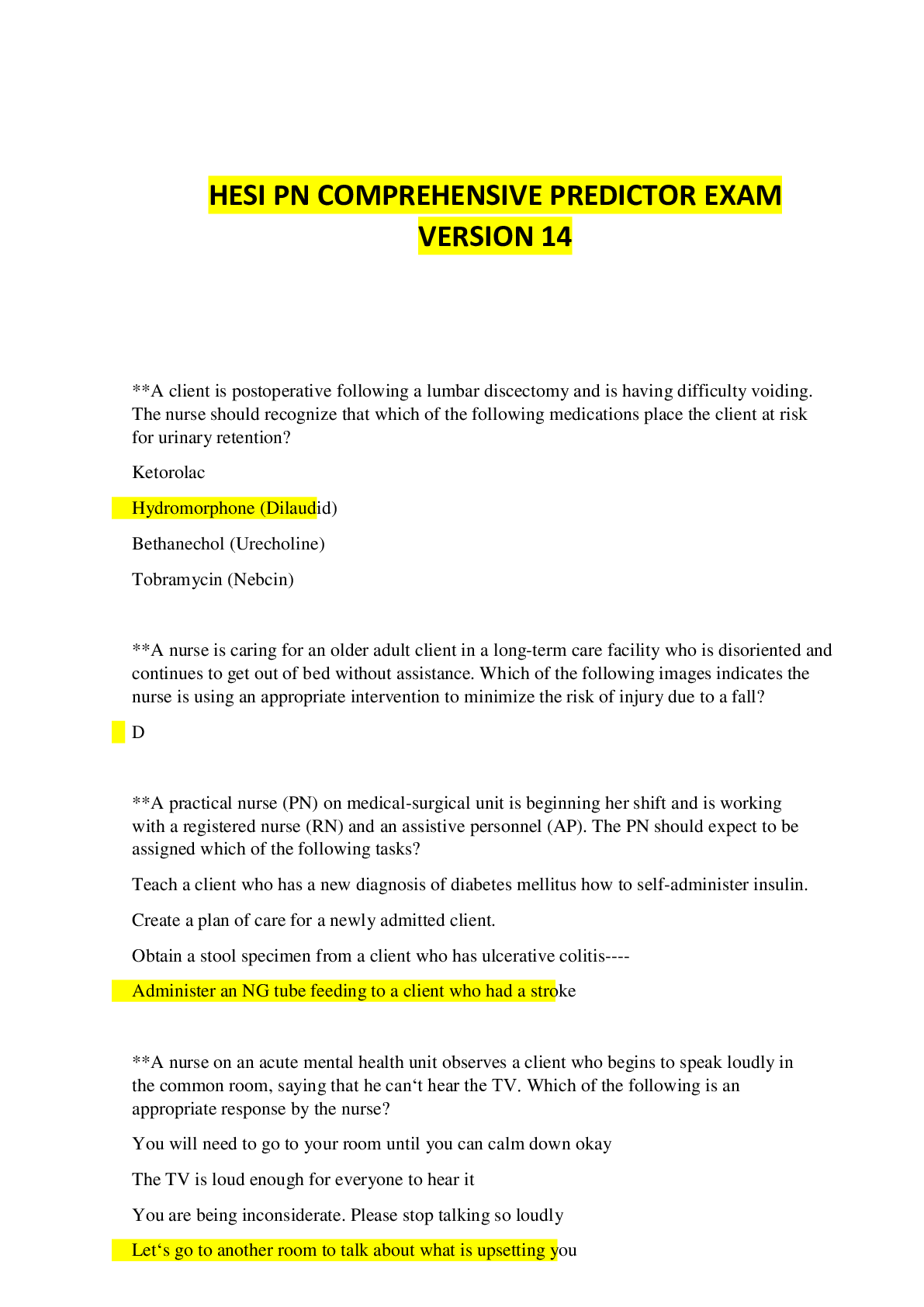HESI RN COMPREHENSIVE PREDICTOR EXAM module level 6 and 7
Document Content and Description Below
HESI RN COMPREHENSIVE PREDICTOR EXAM module level 6 and 7 An oriented patient has recently had surgery. Which action is best for the nurse to take to assess this patient’s pain? a. Assess the p... atient’s body language. b. Ask the patient to rate the level of pain. c. Observe the cardiac monitor for increased heart rate. d. Have the patient describe the effect of pain on the ability to cope. ANS: B One of the most subjective and therefore most useful characteristics for reporting pain is its severity. Therefore, the best way to assess a patient’s pain is to ask the patient to rate the pain. Nonverbal communication, such as body language, is not as effective in assessing pain, especially when the patient is oriented. Heart rate sometimes increases when a patient is in pain, but this is not a symptom that is specific to pain. Pain sometimes affects a patient’s ability to cope, but assessing the effect of pain on coping assesses the patient’s ability to cope; it does not assess the patient’s pain. 2.A nurse is caring for a patient who recently had abdominal surgery and is experiencing severe pain. The patient’s blood pressure is 110/60 mm Hg, and heart rate is 60 beats/min. Additionally, the patient does not appear to be in any distress. Which response by the nurse is most therapeutic? “Your vitals do not show that you are having pain; can you describe a. your pain?” b. “OK, I will go get you some narcotic pain relievers immediately.” c. “What would you like to try to alleviate your pain?” d. “You do not look like you are in pain.” ANS: C Be sure the patient is a partner in making decisions about the best approaches for managing pain. A patient knows the most about his or her pain and is an important partner in selecting successful pain therapies. The nurse must believe that a patient is in pain whenever the patient reports that he or she is in 205pain, even if the patient does not appear to be in pain. The nurse must be careful to not judge the patient based on vital signs or nonverbal communication and must not assume that the patient is seeking narcotics. The patient is a partner in pain management, so going to get narcotics to treat the pain without consulting with the patient first is not appropriate. 3.A nurse teaches the patient about the gate control theory. Which statement made by a patient reflects a correct understanding about the relationship between the gate control theory of pain and the use of meditation to relieve pain? “Meditation controls pain by blocking pain impulses from coming a. through the gate.” “Meditation alters the chemical composition of pain neuroregulators, b. which closes the gate.” “Meditation will help me sleep through the pain because it opens the c. gate.” d. “Meditation stops the occurrence of pain stimuli.” ANS: A According to this theory, gating mechanisms located along the central nervous system regulate or block pain impulses. Pain impulses pass through when a gate is open and are blocked when a gate is closed. Nonpharmacologic pain-relief measures, such as meditation, work by closing the gates, which keeps pain impulses from coming through. Meditation does not open pain gates or stop pain from occurring. Meditation also does not have an effect on pain neuroregulators. 4.A nurse is planning care for an older-adult patient who is experiencing pain. Which statement made by the nurse indicates the supervising nurse needs to follow up? a. “As adults age, their ability to perceive pain decreases.” “Older patients may have low serum albumin in their blood, causing b. toxic effects of analgesic drugs.” “Patients who have dementia probably experience pain, and their pain c. s not always well controlled.” “It is safe to administer opioids to older adults as long as you start with 205small doses and frequently assess the patient’s response to the d. medication.” ANS: A Aging does not affect the ability to perceive pain. This misconception must be corrected by the supervising nurse. All the other statements are true and require no follow-up. Opioids are safe to use in older adults as long as they are slowly titrated and the nurse frequently monitors the patient. Patients with dementia most likely experience unrelieved pain because their pain is difficult to assess. Older adults frequently eat poorly, resulting in low serum albumin levels. Many drugs are highly protein bound. In the presence of low serum albumin, more free drug (active form) is available, thus increasing the risk for side and/or toxic effects. 5. The nurse is caring for two patients; both are having a hysterectomy. The first patient is having the hysterectomy after a complicated birth. The second patient has uterine cancer. What will most likely influence the experience of pain for these two patients? a. Meaning of pain b. Neurological factors c. Competency of the surgeon d. Postoperative support personnel ANS: A The degree and quality of pain perceived by a patient are related to the meaning of the pain. The patient’s perception of pain is influenced by psychological factors, such as anxiety and coping, which in turn influence the patient’s experience of pain. Each patient’s experience is different. Neurological factors can interrupt or influence pain perception, but neither of these patients is experiencing alterations in neurological function. The knowledge, attitudes, and beliefs of nurses, health care providers, the surgeon, and other health care personnel about pain affect pain management but do not necessarily influence a patient’s pain perceptions. 6. The nurse is preparing pain medications. To which patient does the nurse anticipate administering an opioid fentanyl patch? a. A 15-year-old adolescent with a fractured femur b. A 30-year-old adult with cellulitis 205c. A 50-year-old patient with prostate cancer d. An 80-year-old patient with a broken hip ANS: C Transdermal fentanyl (patch), which is 100 times more potent than morphine, is available for opioid-tolerant patients with cancer or chronic pain (prostate cancer). It delivers predetermined doses that provide analgesia for up to 72 hours. The other patients are expected to experience acute pain (fractured femur, cellulitis, and broken hip). Therefore, they will most likely benefit from oral or IV opioids for short-term pain relief. 7.A patient is receiving opioid medication through an epidural infusion. Which action will the nurse take? a. Restrict fluid intake. [Show More]
Last updated: 1 year ago
Preview 1 out of 28 pages

Reviews( 0 )
Document information
Connected school, study & course
About the document
Uploaded On
Jul 01, 2021
Number of pages
28
Written in
Additional information
This document has been written for:
Uploaded
Jul 01, 2021
Downloads
0
Views
36


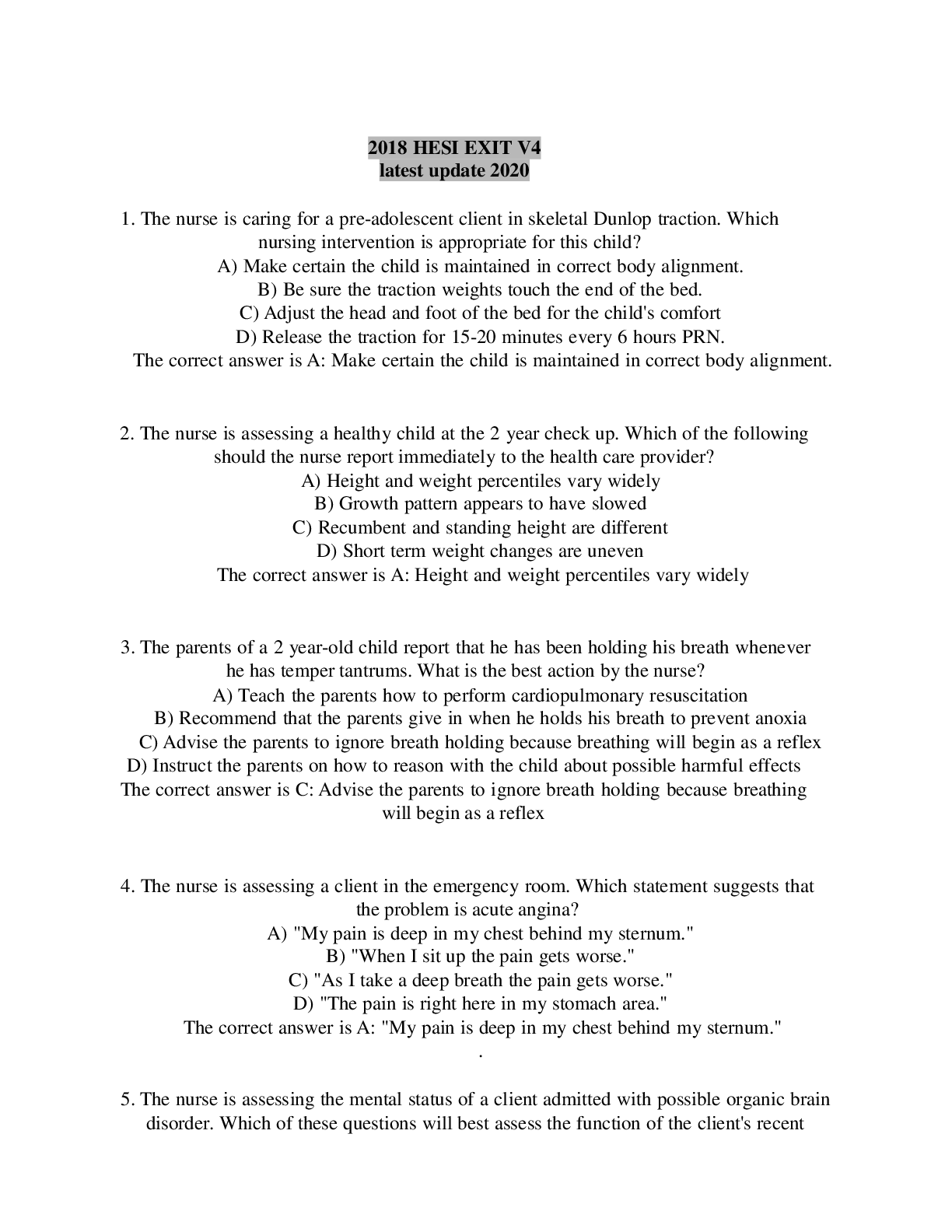
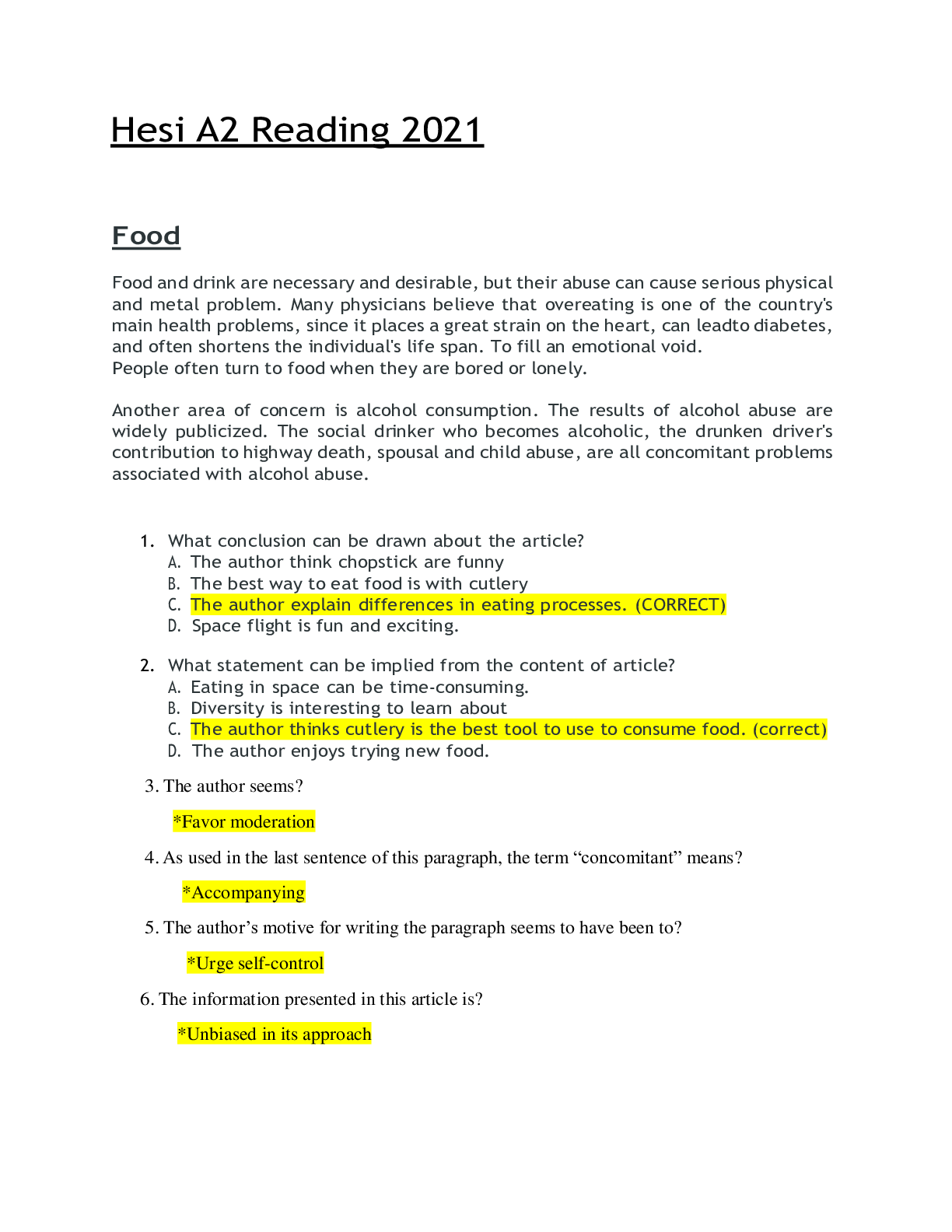
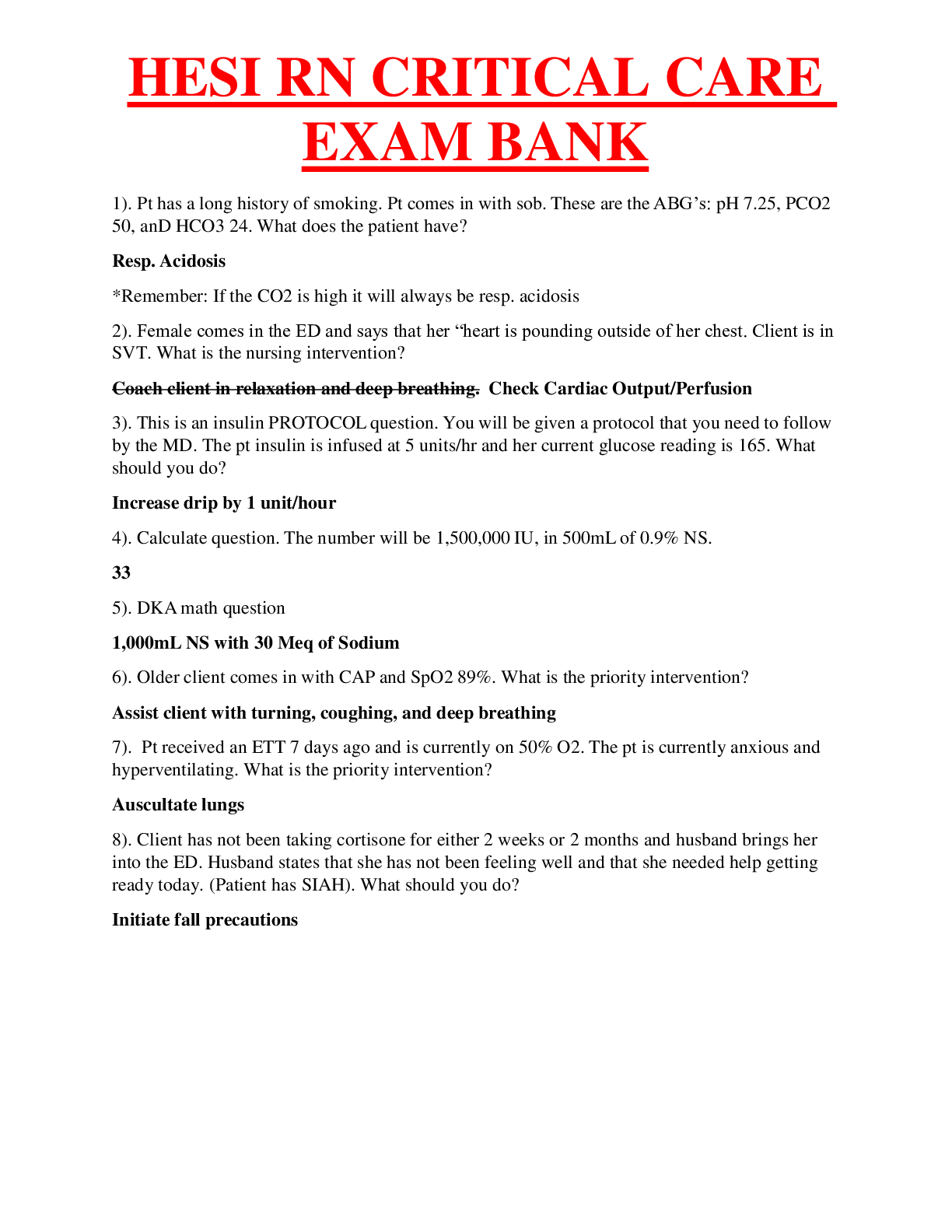
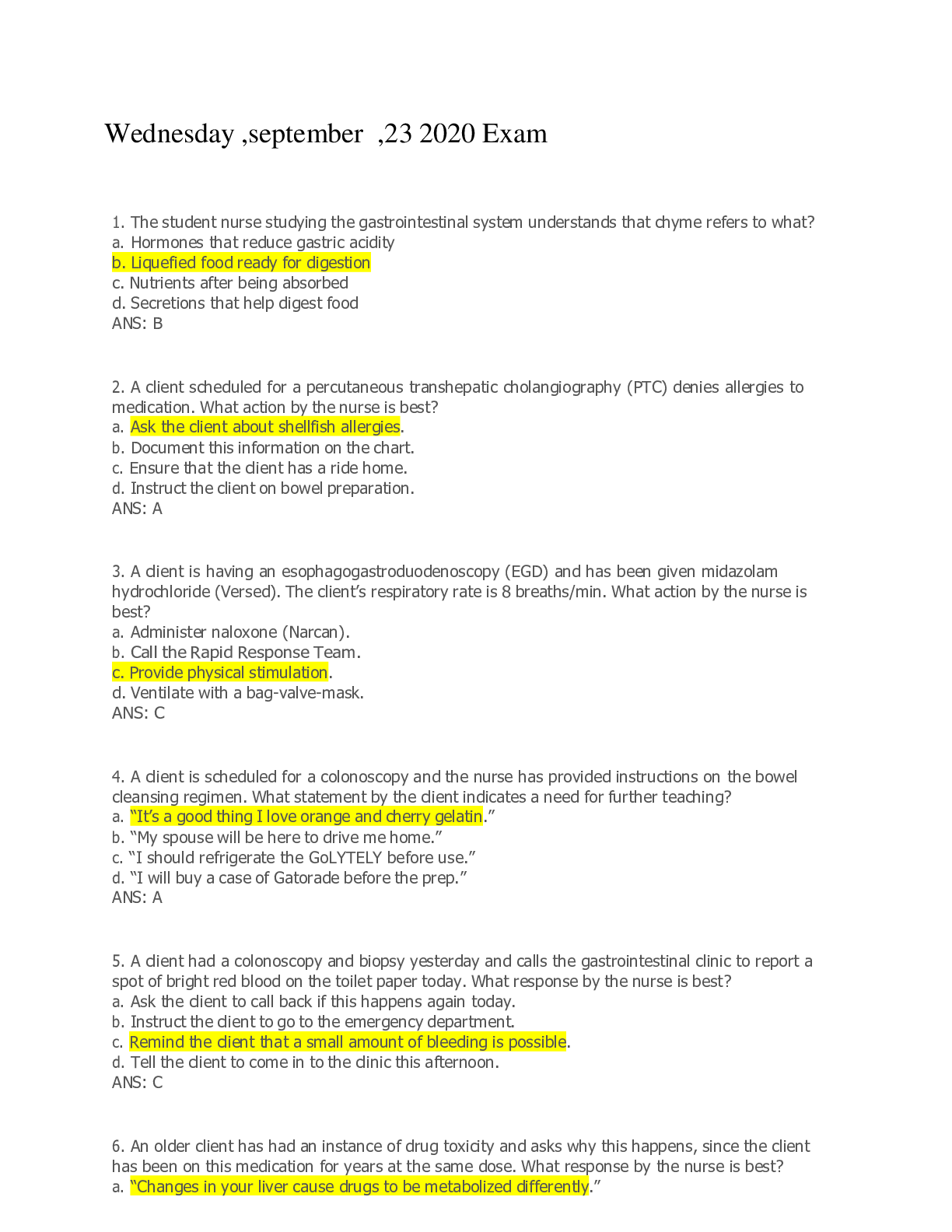

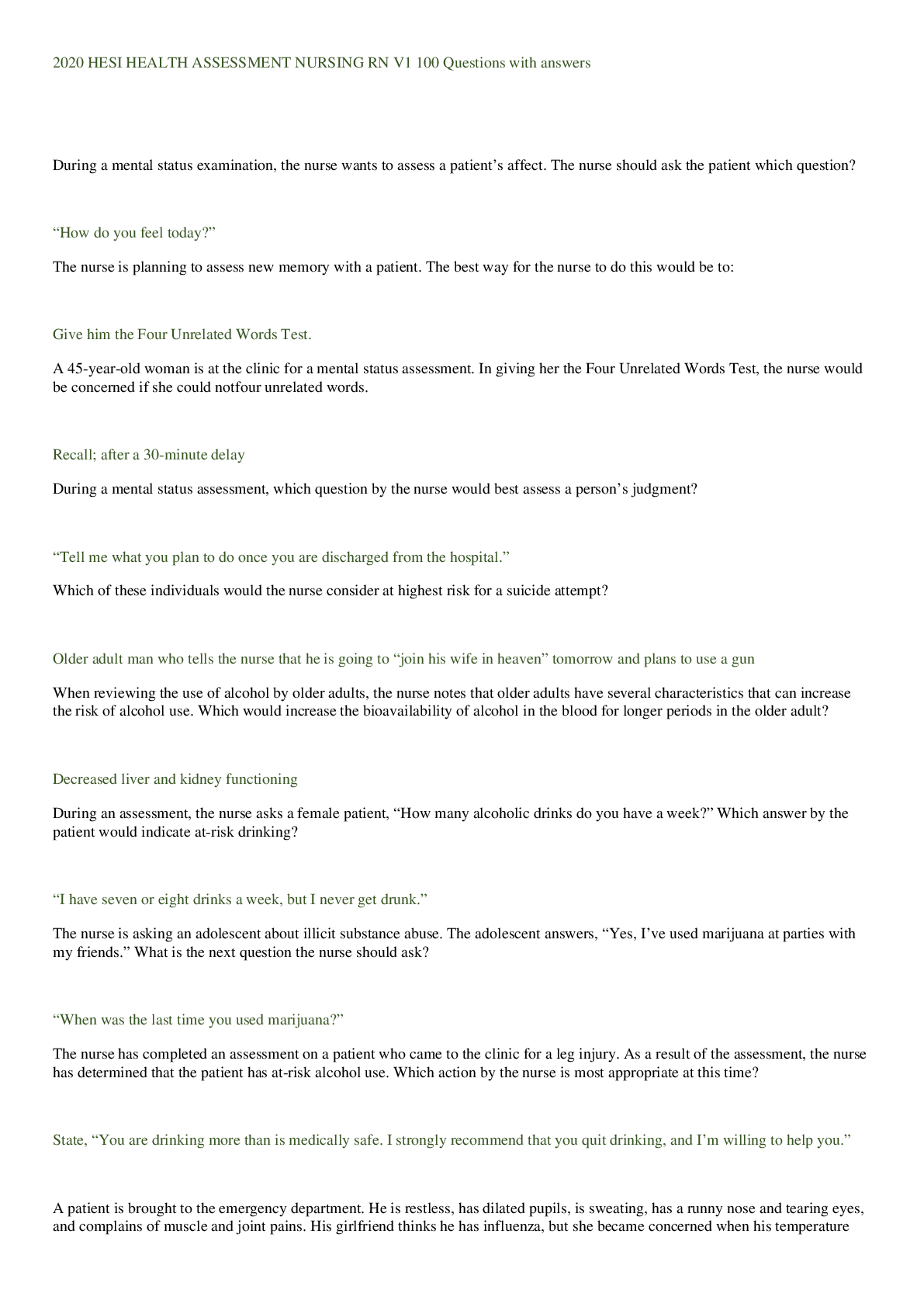

.png)
